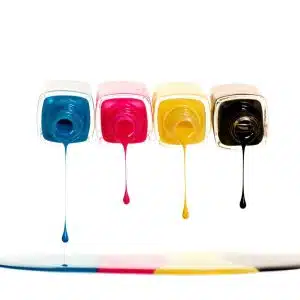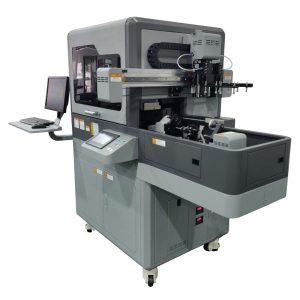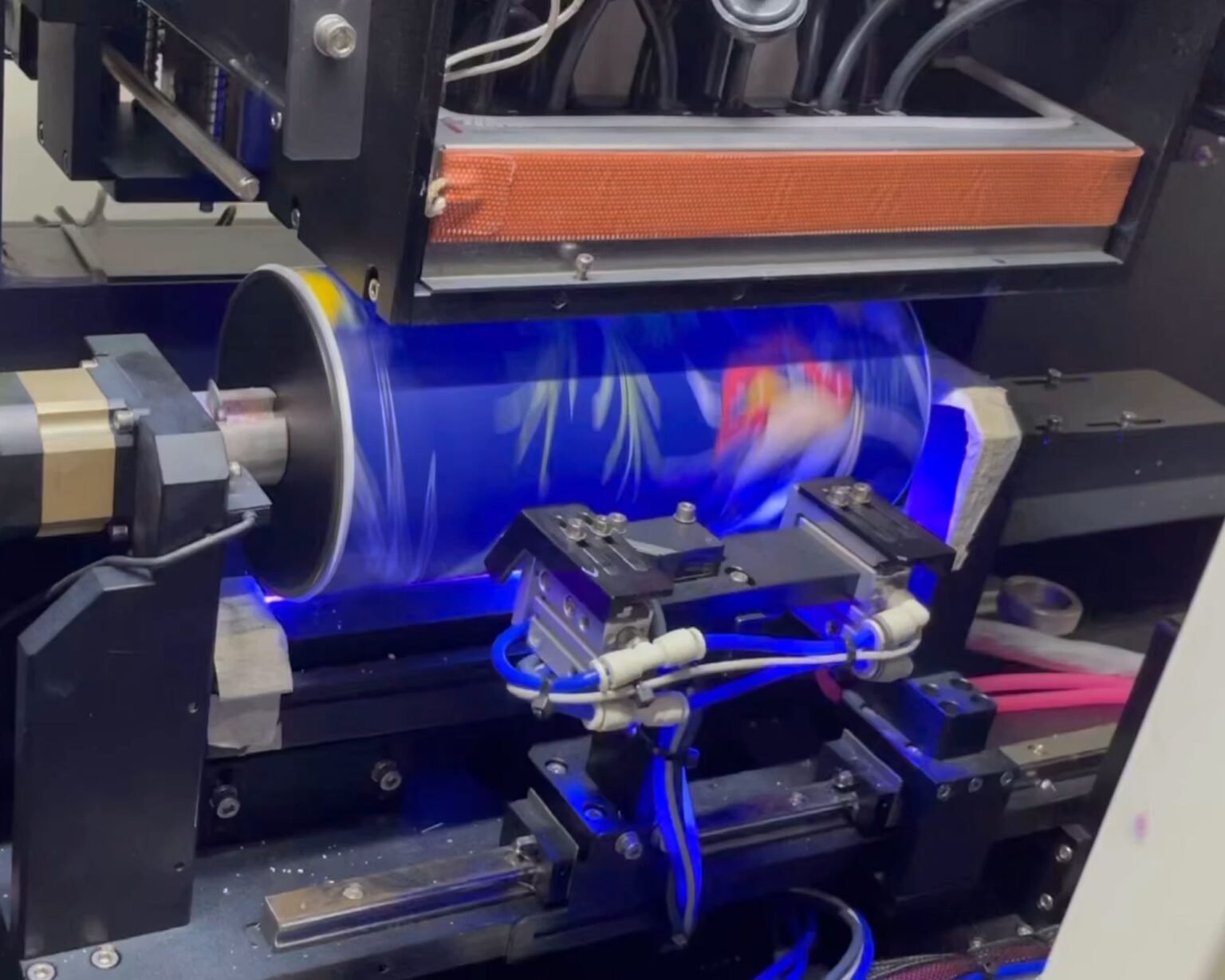How to print on glass permanently
Printing on glass enhances its aesthetic, value, and use. Branding, instructions, aesthetics, profits, etc. are some of the reasons to print on glass. Different industries have different reasons to decorate glass items. For example, promotional product companies print on glassware to advertise or market their brands. Automotive industries mark glass for directions. Signage industries print on glass for display advertising. The beverage industry prints on glass to distinguish their brands from competitors. Learn how to print on glass.
Marking, decorating, or printing involves applying ink to a glass surface. There are several methods for printing on glass, including screen printing, digital printing, and pad printing. These printing methods not only offer the promise of design and printing quality but also enhance flexibility, durability, and sustainability. Additionally, each method has its own set of advantages and disadvantages. As a result, you should choose a method that is suitable for your application and with the result in mind. In this guide, we will discuss various options, tools, and techniques, as well as provide tips on how to achieve the best results.
Types of glass for printing
There are two main categories of glass: regular and irregularly shaped glass surfaces. Regularly shaped glass is flat or round. Irregularly shaped glass has an unusual shape. As initially discussed, there are three main approaches to printing on glass: screen printing, digital UV printing, and pad printing. Screen printing and UV printing are suitable for printing on regular-shaped glass. Pad printing is the choice for printing on oddly shaped glass surfaces. Generally, glass pad printing inks and screen-printing inks are more durable than UV digital printing inks.
Questions to Consider Before Choosing a printer
- Determine your short-term and long-term printing needs. Knowing what products, you want to print will help you choose the best printing method. Popular glass objects include candle holders, short glasses, mugs, pint glasses, mason jars, wine glasses, bottles, growlers, bong pipes, etc. Are the parts flat, round, or oddly shaped?
- Define your printing, marking, or decorating objectives. e.g., is your goal to mark glass or decorate glass? How many colors do you intend to print—1, 2, 4, or a full-color print?
- Decide on your production run volumes. Are you aiming for high- or low-volume production runs? How often will the artwork change from one production run to the next?
- Other factors to consider are durability, sustainability, and the intended use of the product. For example, will glass drinkware undergo industrial washing? What is the printed object’s intended end use—outdoors, in high-humidity environments, in high-abrasion environments, etc.?
- Lastly, it is important to consider compliance-related issues. This will impact the type of glass printing ink to use. Medical devices, food packaging, and toys require very safe printing inks. Consumer products such as promotional products and electronics, on the other hand, require inks that do not contain heavy metals and harmful chemicals.
To choose the right equipment for your application, it is important to know the different processes, printing equipment, and supplies that you will need to effectively print. Let’s review the capabilities and limitations of different printing methods. This will help you choose the best printing equipment for your printing application.
Pad Printing
Pad printing is a process for printing on a variety of irregularly shaped glass items. Additionally, it is also perfect for printing small, high-detail, 1- or 2-color, high-volume production runs that have the same artwork. Pad printing equipment ranges from 1–6 colors. Most pad printing applications use one or two colors. Artwork size, cumbersome pad printing plate making, and the ability to print full color are major limitations of pad printing on glass.
Screen printing
This is a great method for printing round, flat, and cone-shaped glass products. The screen-printing technique is very durable. It is an excellent choice for printing in one or two colors. Printing more than four colors on glass is very complicated and expensive. We recommend screen printing for high-volume glass production in commercial, industrial, and architectural applications.
UV Digital printing process
There are two methods of digital printing on glass: UV-curable printing and digital ceramic printing. We will focus on UV-curable digital printing on glass. UV inkjet printing has many advantages for the industrial, architectural, automotive, signage, electronics, consumer, and promotional products industries. UV printing uses UV light to cure the ink. This technology enables unlimited color combinations. Additionally, UV printing is an economical method for printing high-quality, customizable images on glass in short runs. One disadvantage of UV inkjet printing is the lack of inks that are scratch-resistant, chemical-resistant, and weather-resistant. Adhesion and abrasion resistance can be significantly improved with the use of UV printer glass primer and pretreatment.
Pretreatment Options
Many hard-to-print applications require primers and pretreatments. For screen and pad printing, primer or pretreatment is not required. However, to get scratch-resistant, durable prints on glass using digital inks, a glass primer is needed. UV adhesion promoters for glass ensure that an item passes the strictest adhesion testing. To use wipe-on primer, simply wipe the glass substrate, wait for it to dry in a few seconds, and print. The main function of a primer is to increase the substrate surface energy for the UV inkjet ink to bond with the glass part.
Learn more about UV ink primers for UV inkjet printers.
The best inks for glass
There are different types of ink for different printing equipment and target substrates. Boston Industrial Solutions, Inc., manufactures and offers the best ink for printing on glass substrates for both UV printing and screen and pad printing methods.
UV-curable printing inks
The Natron 270 Series UV ink for glass is an excellent ink for printing on glass and other hard substrates. To get excellent ink adhesion, use the Natron G1 glass primer for UV ink glass printing. This ink works with all Ricoh Gen 4, Gen 5, Seiko, Kyocera, and Toshiba print heads.
The next-best alternative is Natron 314 UV inkjet ink. This is a neutral ink and works with the same print heads as the 270 series. Additionally, the UV ink is perfect for printing on a wide range of substrates. Learn more about our UV inks for inkjet printing.
Screen-printing inks:
The Natron GX screen printing ink for glass is the best ink for marking and screen printing on glass. This ink features excellent screen stability and printability, does not dry on screens, and has a high gloss. Once cured, this ink for screen printing on glass is permanent. Once heat-cured, the GX series has excellent adhesion and abrasion resistance and is dishwasher safe.
Pad-printing inks:
The MG series is the best ink for pad printing on glass. This has a high opacity, a high gloss finish, and an excellent pad release. Like the GX series, this ink has great adhesion on glass and is dishwasher safe.
Visit our YouTube channel for the latest printing technology news.











